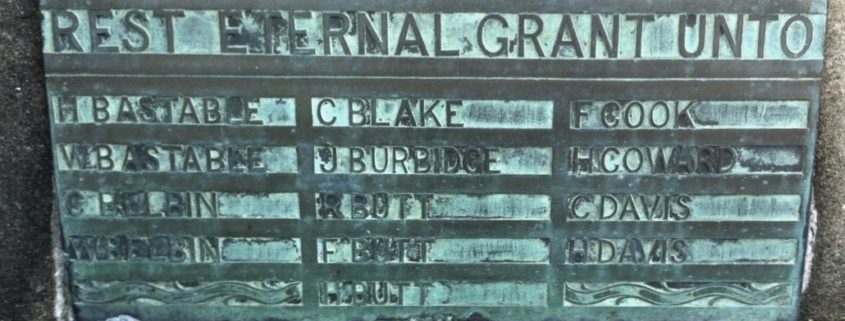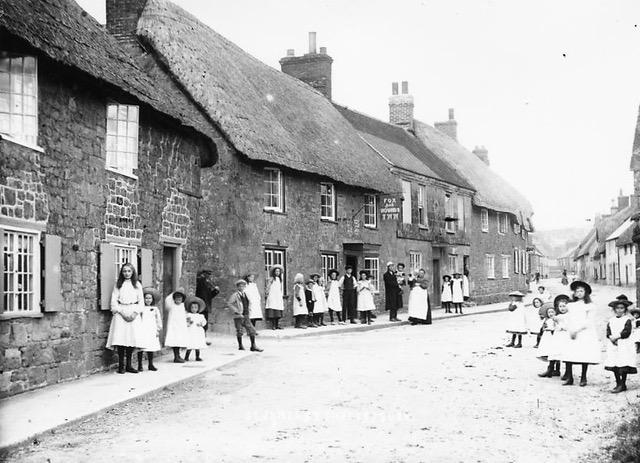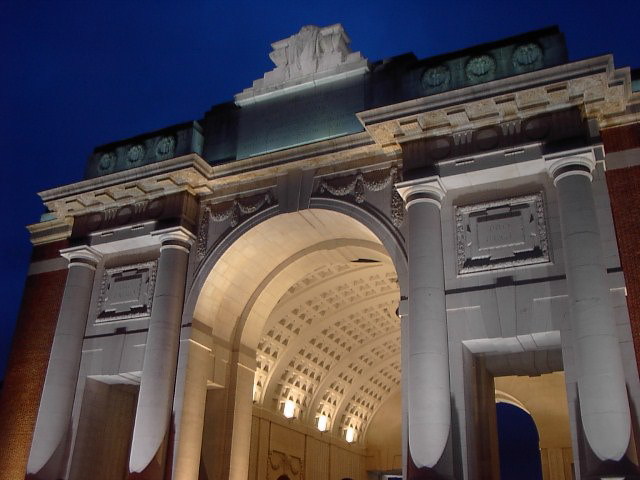Shaftesbury Remembers the Bastable Brothers
On 16 August 1914 Private William Richard Bastable (service no. 7643) disembarked with the 1st Battalion of the Dorsetshire Regiment at Le Havre. Nine days later he and his comrades, professional soldiers in the British Expeditionary Force, were facing the overwhelming strength of the German army at Mons. Kaiser Wilhelm II is alleged to have dismissed the BEF as General French’s “contemptible little army” (though there is no documentary evidence to bear this out). In sixteen sweltering days the “Old Contemptibles” marched 220 miles in an orderly retreat, impressing the enemy with their discipline and withering rifle fire. Almost on the outskirts of Paris, the Allies turned the tide at the Battle of the Marne, and a war of movement became one of attrition, as both sides dug in.
William Richard Bastable was born in Shaftesbury in 1888, the son of George William Edward Bastable, an agricultural labourer, and Fanny Ann Bastable (nee Davis). There were four other children: George (born 1883), Henry John known as Harry (1884), James (1891) and Ruth (1895). William’s father and siblings, plus their father, were listed in the 1871 Census as paupers living in Shaftesbury Workhouse. We are indebted to volunteers Ann Symons and Chris Stupples for researching the story of the Bastables and many others, and entering the information into the Shaftesbury Remembers database. Chris has now passed the personal landmark of 1200 entries. Shaftesbury Remembers continues to expand its coverage and usefulness to researchers worldwide, as noted in the 2020-21 Trustees’ Report and at the 2021 AGM of The Shaftesbury & District Historical Society on 24 August.
Wiliam’s father died aged 47 in 1898 and was buried at St James Church. His widow worked as a laundress and a charwoman to support the children at 84 St James Street, where she is recorded as living with a boarder, George Hull, in the 1911 Census. William joined the Dorsetshire Regiment in 1905 (service no. 4993) and is listed in barracks at Wanowrie Lines, Pune, India in 1911. By 1914 he had returned to England and married Alice Eliza Conway from Melbury Abbas. As he seems to have had two service nos. and some of his military records were destroyed by World War II bombing, we can only speculate that he left the regular Army and then re-enlisted at the beginning of World War I.
Harry Bastable joined the Royal Navy as an Ordinary Seaman on 28 May 1901. He was discharged with good conduct reports on 16 August 1905. No Census entry for 1911 has been found, but it is known that on 28 March 1914 he sailed for Canada aboard the S.S. ‘Tunisian’ and found work in Nova Scotia as a warehouseman. On 17 December 1914 in Winnipeg, he enlisted as a private in the Princess Patricia’s Canadian Light Infantry (Eastern Ontario Regiment) and sailed for France on 16 March 1915. The two brothers were destined to serve simultaneously in the same area of the Western Front, the Ypres Salient.
Hill 60 was a man-made mound of earth, thrown up by the construction of the adjacent railway cutting in the 1850s. In the flatlands of Flanders it was something of a vantage point and possession was keenly contested. It was captured by the Germans in December 1914 and the Dorsets helped to retake it in late April 1915. As one of the few survivors from the original BEF, William Bastable now had the misfortune to be exposed to one of the earliest uses of chemical warfare. Clouds of yellow and white chlorine gas drifted across No Man’s Land from nozzles in the German front line. The instinct to hunker down in the trenches was invariably fatal as the gas was heavier than air and the rudimentary protection little more than bits of flannel or gauze. The Official History states on 05 May that ’90 men died in the trenches or before they could be got to a dressing station; of the 207 brought to the nearest dressing station, 46 died almost immediately and 12 after long suffering.’ William died at No.2 Casualty Clearing Station, probably unaware that his wife had given birth to a daughter, Winifred Violet Alberta, on 29 April 1915. He is buried at Bailleul Communal Cemetery Extension, Nord, France.
‘The attack on Hill 60, to which the the gas was a preliminary, was driven off – not least, perhaps, because the wind changed and some of it drifted back upon those who sent it – but a few days later the Germans tried again. This time they were more successful …. Hill 60 was lost, and with it 627 men of the battalion in one abominable week.’ (Hugh Popham, ‘The Dorset Regiment’, p74). It was also an abominable week for Fanny Ann Bastable. On 08 May 1915 Harry Bastable was killed in action at Bellewaarde Lake near Ypres. His body was never recovered and he is one of 54,395 Commonwealth soldiers with no known grave whose names are incised on the Menin Gate at Ypres.
Both William and Harry Bastable are remembered on the Park Walk and St James War Memorials, the Roll of Honour in St James Church, and the Holy Trinity Memorial, now in St Peter’s Church, Shaftesbury.







